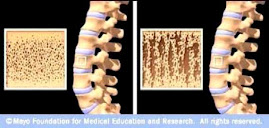Overview
Body frame size is determined by a person's wrist circumference in relation to
his height. For example, a man whose height is over 5' 5" and wrist is 6"
would fall into the small-boned category.
his height. For example, a man whose height is over 5' 5" and wrist is 6"
would fall into the small-boned category.
Determining frame size: To determine the body frame size, measure the
wrist with a tape measure and use the following chart to determine whether
the person is small, medium, or large boned.
wrist with a tape measure and use the following chart to determine whether
the person is small, medium, or large boned.
Women:
- Height under 5'2"
- Small = wrist size less than 5.5"
- Medium = wrist size 5.5" to 5.75"
- Large = wrist size over 5.75"
- Height 5'2" to 5' 5"
- Small = wrist size less than 6"
- Medium = wrist size 6" to 6.25"
- Large = wrist size over 6.25"
- Height over 5' 5"
- Small = wrist size less than 6.25"
- Medium = wrist size 6.25" to 6.5"
- Large = wrist size over 6.5"
Men:
- Height over 5' 5"
- Small = wrist size 5.5" to 6.5"
- Medium = wrist size 6.5" to 7.5"
- Large = wrist size over 7.5"



2 comments:
Hi BoneLady...
I am wondering how the recent follow-ups concerning the Strontium supplement have fared. I know the early bone scans looked very good and promising. Has it continued to be beneficial for you? I am thinking of starting the whole regimen of calcium/mag etc.. including the Strontium Citrate and am not finding much info other than your wonderful blog.
Any info concerning your recent thoughts on Strontium would be so helpful!
Thanks,
Jules
Hi Jules,
All my DXA scans since beginning SC have shown improvements in BMD. More importantly, I have had no fractures and I am now 72 years old. I could not be happier with SC and my other supplements. The following links are for my last two bone scans on January 8, 2019 and August 4, 2016.
http://strontiumforbones.blogspot.com/2019/01/axial-dxa-8-january-2019.html
http://strontiumforbones.blogspot.com/2016/08/my-dxa-scan-on-august-4-2016.html
Post a Comment